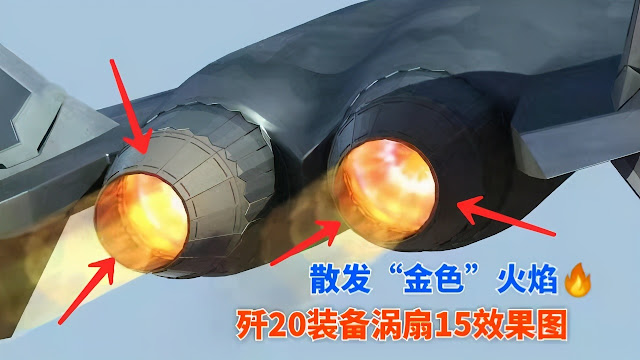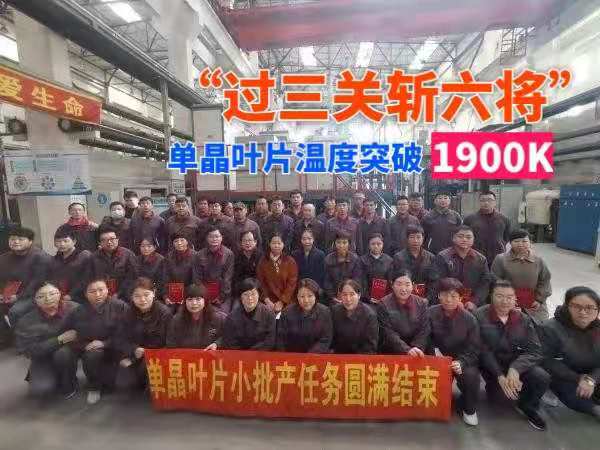Sunson Guo
Translated by google
2020-12-06 20:22
I still remember a pilot who said that entering supersonic speed is the world of J-20. This sentence emphasizes the two major characteristics of the J-20. One is its strong beyond-visual range strike capability. The phased array radar and the Pili-15 missile it carries can ensure "first enemy discovery, first enemy launch, first enemy The strategic goal of shooting down. Another feature is that because the J-20 uses all-moving canards, it can provide extra lift during flight, enhancing the maneuverability and flexibility of the fighter. The J-20 aerodynamic layout is indeed very good, but the fact before everyone is that the J-20 uses a unique canard layout to make up for the "embarrassment" of the J-20 engine's insufficient thrust.
The early J-20 used Russian engines, which had very low thrust and a short life span. Therefore, many people believe that the J-20's poor power will affect its combat capabilities. But having said that, even if the J-20 has some shortcomings in the engine, there is no problem with hitting the fourth-generation aircraft.
After China’s AVIC made a special technical assault on the J-20 engine, it changed a lot, and then replaced the J-20 with a domestic Taihang turbofan-10 B engine, which has more thrust than the Russian AL-31F engine. Larger and longer life. But compared with the American F-22F119-PW-100 vector engine equipped with 16 tons of thrust, there are still some gaps.
Therefore, at this stage, although my country has developed the WS-10B vector engine, it is still compatible with the F-22 AL-41F-1, Su-57 AL-41F-1 and F-22 AL-41F-1. There is a big gap. This is not only reflected in thrust, but also in fuel consumption, service life and maintenance time. So everyone turned their attention to Turbofan 15 "Emei". Looking forward to the stars and the moon, looking forward to all the dynamics of Turbofan-15.
Before this, good news is finally expected. According to official sources from the Aviation Industry Corporation of China, the thrust of China's turbofan-15 engine has soared to nearly 19 tons, with a thrust-to-weight ratio of 10.85. More importantly, its nozzle has vector characteristics. , Which belongs to the full-motion type, which can jet to any angle. In addition, the turbofan 15 engine also uses an advanced dual redundancy full authority digital electronic control system and a three-element vector tail nozzle, with advanced fault isolation functions. This is undoubtedly great news, so why did the development of the turbofan 15 take so long before this?
In terms of specific research, the turbofan-15 should be developed at the same time as the J-20, that is, the research and development began in the 1990s. However, my country’s aeroengines have a long-term "bottleneck", and the turbofan-15 design standard itself is very High, so it is really not easy to develop in a short time!
Let’s take a look at the general design standards of the turbofan-15 engine. According to rumors, the maximum thrust of the turbofan-15 engine in the initial stage of development is about 18 tons, the thrust-to-weight ratio is about 10.03, the bypass ratio is 1900 K, and the temperature before the turbine is 1900 K. , The use of single crystal hollow blades, etc., although these are the advantages of the turbofan-15 engine, but also its design difficulties (of course, as a fourth-generation engine, it must also meet this standard)!
Compared with my country’s current mainstream, the most successfully developed turbofan 10 engine, at least 7 models have been derived at this stage, the maximum thrust is only 13.5 tons, the thrust-to-weight ratio is only 8, and the bypass ratio is 0.89. It is reported that the turbofan 10 is The temperature in front of the turbine has risen to 1800 K (the author has temporary doubts about this, after all, the blade performance of the turbofan 10 was not up to date)!
In contrast, it can be seen that if you want to upgrade the state of the turbofan-10 to the "design standard" of the turbofan-15, the improvement is not one or two points, but a comprehensive improvement of all indicators, so the development is also difficult. It's huge.
Next, let’s take a look at the progress. In 12 years, it was reported that the maximum thrust of the turbofan-15 ground test reached 18 tons, which shows that the goal of increasing the thrust has almost been achieved (the previous increase has exceeded 19 tons) of course, Ground test does not represent practical application. After all, the ground test thrust of the F-135 engine has reached 20.4 tons; and in 18 years, the Shenyang Institute of Metal Research , Chinese Academy of Sciences revealed in the first-class invention award announcement that its DD405 single crystal hollow The overall qualification rate of blades has increased from 10% to 50%, and the qualification rate of solid blades has reached 75%.
Single crystal hollow blades are very important. At this stage, most of the third-generation engines use directionally solidified superalloys, so that the working temperature of the engine turbine blades can reach 1273 K; and the single-crystal alloys used in the fourth-generation engines are added The microstructure of rhenium, cobalt, molybdenum, ruthenium, etc., makes the working temperature of turbine blades reach 1470 K, and the microstructure stability is further improved.
But even so, simply increasing the heat resistance of the blades is not enough. After all, the inlet temperature of the fourth-generation turbofan engine has reached 1900 K, which is 300 K higher than the heat resistance of the blades. The emergence of this problem perfectly solved the problem.
Single crystal hollow blades allow airflow to pass through the blades, effectively reducing the temperature of the blades, thereby further improving the heat resistance of the engine, and the thrust of the natural engine is also improved! The production of single crystal hollow blades is of course very difficult. It is necessary to allow the crystal force of the single crystal to "grow" in one direction with overload in a specific environment to form an identical single crystal.
Specifically, a small blade is enough to top a BMW! Therefore, if the turbofan-15 engine uses single-crystal hollow blades, and the temperature in front of the turbine exceeds 1800 K or even 1900 K, then the life of the engine can be greatly improved when the thrust reaches 18 tons!
Compared with the F-20 equipped with a turbofan 10 B engine before, even if the performance is dig to the limit, it will not bring a real improvement to the F-20. But the turbofan 15 engine is completely different. It was originally prepared for the J-20. Its thrust can reach more than 1 ton (about 19 tons), allowing the J-20 to give full play to its combat effectiveness.
The point is that the turbofan 15 engine has adopted vector thrust, which makes the F-20 fighter more mobile in the air. At present, the turbofan 10 vector thrust engine has been used on the F-10 in my country, so the coding of vector thrust is not a problem at all, but the situation of the F-20 is more complicated. J-20 has both stealth ability and super maneuverability. It combines the essence of Eastern and Western technologies, making it a leader in stealth fighters in the world.
According to related news, the development of WS-15 is nearing completion. From the previous news about the production of 03 batches of turbofan-15 engines, it should have been an engine that overcomes problems. The engine has entered the verification stage. The next step is Prototype, after the prototype is the design finalization, and finally the production finalization! Moreover, the prototype and the design finalization stage can theoretically be installed on the J-20 for flight test verification and improvement! This node should be completed within 2-3 years. After solving all the problems, the J-20 equipped with WS-15 will be officially put into production
In general, there are only two fighters in the world that can achieve supersonic cruise, one is the US F-22, and the other is the European "Typhoon" fighter. After the WS-15 is modified, the J-20 will become the third fighter with supersonic cruise capability in the world after the F-22 and Typhoon fighters.
With super cruise capability, the J-20 can cruise for half an hour without opening the afterburner. What is that concept? With super cruise capability, the J-20 can fly to a favorable position for over-the-horizon strikes in wartime conditions, and can quickly fly out of the battle zone after completing combat missions, avoiding a "dog fight" with enemy aircraft.








No comments:
Post a Comment